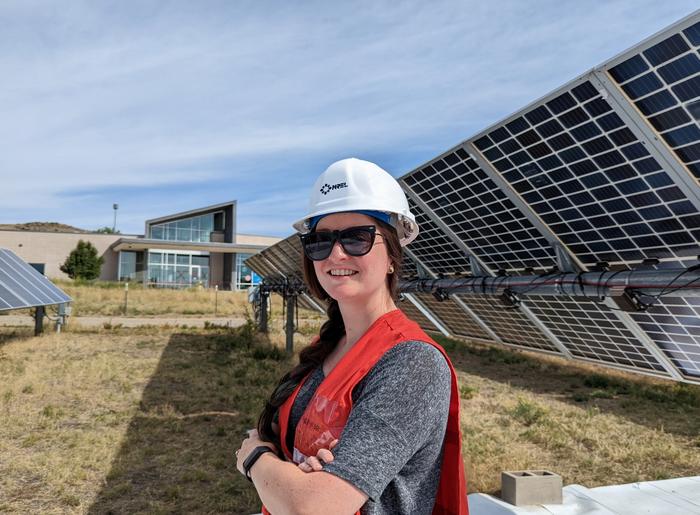Solar energy is a crucial asset in the fight against climate change, and researchers at the University of Ottawa have devised a smart approach to optimize its effectiveness. Their innovative method includes incorporating artificial ground reflectors, a simple yet powerful enhancement.

Credit: University of Ottawa
Solar energy is a crucial asset in the fight against climate change, and researchers at the University of Ottawa have devised a smart approach to optimize its effectiveness. Their innovative method includes incorporating artificial ground reflectors, a simple yet powerful enhancement.
The researchers found that by integrating these reflectors into solar setups, they could improve the system’s energy production and efficiency, making such projects more economically viable. This discovery is significant in assessing the costs and benefits of using artificial reflectors in solar energy ventures.
To study how reflective ground covers affect solar energy output, the University of Ottawa’s SUNLAB, led by electrical engineering Professor Karin Hinzer, who is also vice-dean, research of the Faculty of Engineering, collaborated with the National Renewable Energy Laboratory (NREL) in Golden, Colorado, a world leader in clean energy research, development, and deployment. The study, which was conducted by electrical engineering doctoral candidate Mandy Lewis in Golden, Colorado, found that placing reflective surfaces under solar panels can increase their energy output by up to 4.5%.
“We found that highly reflective white surfaces can boost solar power output,” explains Mandy Lewis, the paper’s lead author. “Critically, these reflectors should be placed directly under the solar panels, not between rows, to maximize this benefit.”
Unlocking solar potential in Canada and beyond
These findings are particularly significant in Canada, where snow cover persists for three-to four months of the year in major cities like Ottawa and Toronto, and 65% of the country’s vast landmass experiences snow cover for over half the year. Bifacial solar systems, paired with high ground reflectivity, offer tremendous potential in these regions. Additionally, given that approximately 4% of the world’s land areas are classified as sandy deserts, this finding has global applications.
According to Lewis, “this research is crucial for maximizing solar energy production in geographically diverse locations. Furthermore, by generating more power per unit of land area, reflectors are ideal for densely populated areas, like city centres, where space limitations exist for solar installations.”
This study marks the beginning of a new international research collaboration between the University of Ottawa and NREL. The project was funded by the National Sciences and Engineering Research Council of Canada (NSERC), Ontario Graduate Scholarships (OGS), and the US Department of Energy (DoE), underscoring the importance of collaborative efforts in advancing renewable energy technologies.
Global impact in facilitating the transition to clean energy
This research will contribute significantly to the global transition to zero-emission power sources. These findings hold particular value for Canada and other countries that are typically cloudy, since power gains of 6.0% were observed in cloudy Seattle compared to 2.6% in arid Tucson.
The study “Artificial Ground Reflector Size and Position Effects on Energy Yield and Economics of Single Axis Tracked Bifacial Photovoltaics” was published in Progress in Photovoltaics journal.
DOI
Method of Research
Case study
Subject of Research
Not applicable
Article Title
Artificial ground reflector size and position effects on energy yield and economics of single-axis-tracked bifacial photovoltaics
Article Publication Date
7-May-2024



